Simple Rules for Picking High-Quality Jams for Cheese Boards

Choosing a jam for a cheese board isn’t about impressing anyone with a pretty label, Often overlooked and criminally underrated. Yes, we're talking about the jam on your next cheese board. The good news is it's not make or break but it is the difference between a good or great experience. The key to choosing a jam for a cheese board isn't the pretty label accompanying it; it's about what works on the plate for the palette. Cheese is rich, salty, and sometimes sharp, and jam offers a delicious, sweet contrast.
You wouldn't be too far from the norm if you prioritize choosing cheeses and arranging the board, but humor us, and you'll discover that the right jam offers will add a touch of decadence. Not only that, but a good jam will also bring out the best in everything around it. Soft cheeses feel creamier when paired with a delicious raspberry jam. Aged ones taste bolder. The whole board feels more complete. Choosing the right one only takes a few minutes, the payoff is immediate, and the memory will last a lifetime.
Start by checking the ingredients. If sugar or syrup is listed before fruit, put it back. Quality jam has fruit at the top of the list and not much else, such as apricot, fig, or cherry. Whatever the base, it should be clear and recognizable. Skip anything with "natural flavors" or vague additives. Good jam tastes like the fruit it came from. That's the whole point. Read on to learn our six rules for picking the best jam for your board.
Rule 1: Fruit should be first, on the label and on the palate.
You want to see the fruit listed before sugar. Good jam uses ripe, flavorful produce, not filler sweeteners, to mask blandness. A fig jam made with actual figs and a bit of lemon juice will bring out the richness in soft cheeses like Brie or Taleggio. In contrast, a jar that lists corn syrup and fruit concentrate tends to taste flat and overly sweet. Even a sharp cheddar gets buried under all that sugar.
Rule 2: Watch for sugar traps.
Too much added sugar flattens the flavor. It turns the jam into a generic smear of sweetness, which can overwhelm delicate cheeses. Look for jars that use a short list of ingredients and avoid anything that reads like a chemistry experiment. Simple wins here. Lower-sugar or preserve-style options often work better with tangy cheeses like fresh goat cheese or creamy robiola. Heavy sugar content can make those cheeses taste sour instead of bright.
Rule 3: Match texture to cheese.
How a jam feels can impact how it tastes. Thick, chunky jams work well with firm or aged cheeses. A soft cheddar or Comté holds up nicely against fig preserves or marmalade with peel. For creamy cheeses like Brie or Camembert, choose a smoother jam that spreads easily and doesn’t swamp the texture of the cheese. The pairing should feel balanced, not one-sided.
Rule 4: Use jam to balance, not double down.
A salty blue cheese doesn’t need more intensity. It needs contrast. Something mildly sweet, like pear jam or cherry preserves, can soften the sharp edges without dulling the character. Strawberry jam can be a little too sweet for Gorgonzola, which already offers its fair share of intensity. A pear or cherry preserve usually strikes a better balance. Milder cheeses like ricotta or Havarti benefit from brighter flavors like raspberry or tart apricot. Think of jam as a counterpoint andan opportunity to complement our chosen cheese, not a mirror.
Rule 5: Think seasonally.
Like your wardrobe, cheese boards change with the time of year. Your choice of jam should too. In summer, go for berry-based spreads that match lighter cheeses and fresh textures. Blackberry jam pairs well with burrata or fresh chèvre, especially when served with crusty bread. In winter, deeper flavors like fig or spiced plum pair naturally with nutty Alpine cheeses or aged Goudas. Spring is a good time for rhubarb or strawberry jams alongside soft cheeses like robiola. Fall leans toward apple butter or quince paste with aged cheddar. This is also a good time to use fruit spreads, especially if you’re including chutney-style options with savory elements.
Rule 6: Don’t overlook savory jams.
Tomato jam, red pepper jelly, or onion marmalade might not sound like obvious choices, but expect to be pleasantly surprised. They work well. They shine with sharp cheddar or goat cheese. These aren’t sweet in the usual sense, but they add depth and complexity without overpowering the cheese. A small spoonful goes a long way.
You don’t need a lineup of jars crowding the board. One or two jams that actually work with the cheeses you’re serving will do more than a mismatched spread of half-used condiments. Pick with intent, not volume. Quality over quantity, always. The goal is to support the cheese, not distract from it.
Keep it simple and let the cheese lead.
The right jam doesn’t steal the show. It supports the cheese, cuts the richness, and adds just enough contrast to keep people coming back for one more bite. A few thoughtful choices are more effective than a dozen mismatched jars. Stick to quality and trust your palate.

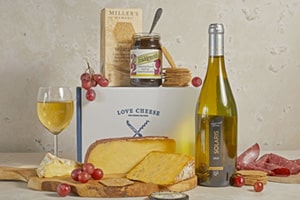
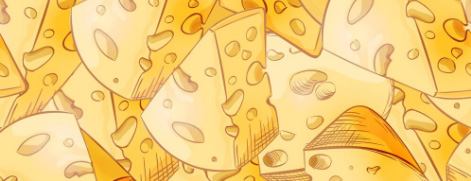
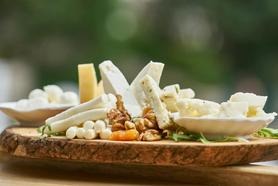
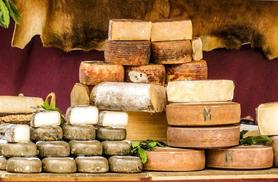
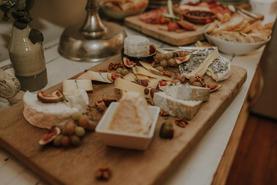
Loading comments...